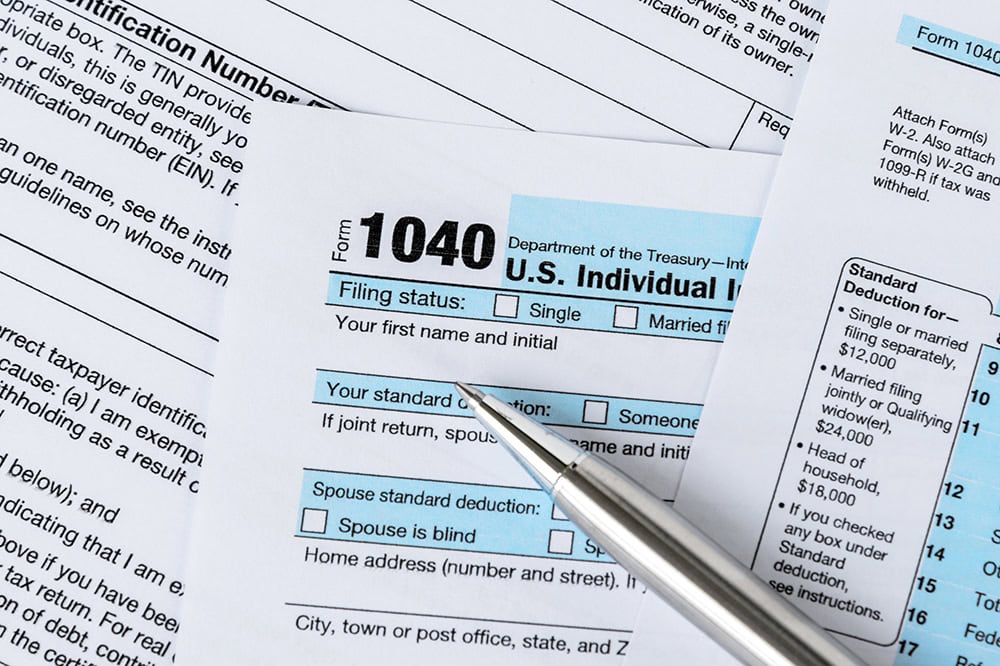As Lawmakers Propose Paying for Their Priorities, U.S. Fiscal Confidence Highest in 2.5 Years
The April 2021 Fiscal Confidence Index, Modeled after the Consumer Confidence Index, is 56 (100 is Neutral)
NEW YORK (April 30, 2021) — Voters’ expectations for progress on America’s national debt increased by 20 points as the administration and Congress discuss a wide range of policy proposals — and the ways to pay for them — according to the Peter G. Peterson Foundation’s monthly Fiscal Confidence Index. The April Fiscal Confidence Index, modeled after the Consumer Confidence Index, is still very low at 56 (100 is neutral), indicating that voters continue to hold deep concerns about the national debt, though this is the highest level in the index since October 2018.
With significant news coverage of the administration’s proposal of programs that are fully paid for, the component of the index measuring voters’ expectations for progress on the national debt increased from 61 to 81 in April, driving the overall index materially higher.
“Voters are clearly enthusiastic that lawmakers are finding ways to pay for their priorities rather than add more to the national debt,” said Michael A. Peterson, CEO of the Peterson Foundation. “Americans expect their leaders to find responsible ways to operate the government, and the current proposals that fully fund programs have improved their confidence and expectations that our leaders will get our fiscal house in order. While we have much more to do to address the structural drivers of the debt, this is an important start and lawmakers should maintain this fiscally responsible approach.”
Despite the increase, the overall level of fiscal concern remains high across wide, bipartisan majorities of Americans. Seventy percent of voters want the national debt to be a top-three priority for the president and Congress, including 66% of Democrats, 63% of independents, and 80% of Republicans. Three in four voters say their concern about the national debt has increased over the past few years. Voters are virtually tied on whether they are pessimistic or optimistic that the U.S. will make progress on the national debt over the next few years (45% optimistic/46% pessimistic, from 37%/56% last month). That change is driven by substantial movement among Republicans, for whom optimism has increased and pessimism has decreased by 12 points.
The Fiscal Confidence Index measures public opinion about the national debt by asking six questions in three key areas:
- CONCERN: Level of concern and views about the direction of the national debt.
- PRIORITY: How high a priority addressing the debt should be for elected leaders.
- EXPECTATIONS: Expectations about whether the debt situation will get better or worse in the next few years.
The survey results from these three areas are weighted equally and averaged to produce the Fiscal Confidence Index value. The Fiscal Confidence Index, like the Consumer Confidence Index, is indexed on a scale of 0 to 200, with a neutral midpoint of 100. A reading above 100 indicates positive sentiment. A reading below 100 indicates negative sentiment.
Fiscal Confidence Index Key Data Points:
- The April 2021 Fiscal Confidence Index value is 56. (The March value was 47. The February Value was 52.)
- The current Fiscal Confidence Index score for CONCERN about the debt is 56, indicating deep concern about the debt. The score for debt as a PRIORITY that leaders must address is 31, indicating that Americans want elected leaders to make addressing long-term debt a high priority. The score for EXPECTATIONS about progress on the debt is 81. The Fiscal Confidence Index is the average of these three sub-category scores.
- For a description of the complete methodology, see the Appendix below.
The Peter G. Peterson Foundation commissioned this poll by the Global Strategy Group and North Star Opinion Research to survey public opinion on the national debt. The online poll included 1,001 registered voters nationwide, surveyed between April 19, 2021 and April 22, 2021. The poll has a margin of error of +/- 3.1%. The poll examined voters’ opinions on the national debt, political leadership, and America’s fiscal and economic health.
Detailed poll results can be found online at: www.pgpf.org/FiscalConfidenceIndex.
About the Peter G. Peterson Foundation
The Peter G. Peterson Foundation is a nonprofit, nonpartisan organization that is dedicated to increasing public awareness of the nature and urgency of key fiscal challenges threatening America’s future, and to accelerating action on them. To address these challenges successfully, we work to bring Americans together to find and implement sensible, long-term solutions that transcend age, party lines and ideological divides in order to achieve real results. To learn more, please visit www.pgpf.org.
APPENDIX: Fiscal Confidence Index Methodology and Questions
- The Fiscal Confidence Index is released monthly by the Peter G. Peterson Foundation.
- The Fiscal Confidence Index value is based on six questions in three categories.
- As is done with the Consumer Confidence Index, the first step in calculating the Fiscal Confidence Index is determining the “Relative Value” for each question. This calculation is made by taking the positive response for each question and dividing it by the sum of the positive and negative responses. Each question was asked on a four-point scale, and answers were weighted according to intensity, with the strongest responses counting twice as much as the middle responses (“much” better or worse answers count twice as heavily as “somewhat” better or worse answers).
- The scores for the Concern, Priority, and Expectations categories are determined by averaging the scores derived from the two questions in each category.
- The Fiscal Confidence Index value is converted from the Relative Value to place it on a scale on which 100 indicates equal positive and negative sentiment, while values below 100 indicate negative sentiment and values above 100 indicate positive sentiment.
- The questions are as follows:
| CONCERN (56) | |||
|---|---|---|---|
| Thinking about our national debt over the last few years, would you say your level of concern has increased or decreased? ◊ Is that a lot or just a little? |
April 2021 | March 2021 | February 2021 |
| Increased a lot | 51% | 46% | 46% |
| Increased a little | 25% | 26% | 30% |
| Decreased a little | 6% | 5% | 7% |
| Decreased a lot | 4% | 4% | 4% |
| (No change) | 8% | 14% | 8% |
| (Don’t Know/Refused) | 6% | 5% | 5% |
| INCREASED (NET) | 75% | 72% | 76% |
| DECREASED (NET) | 10% | 9% | 11% |
| When it comes to addressing our national debt, would you say things in the United States are heading in the right direction or do you think things are off on the wrong track? ◊ Do you feel that way strongly or just somewhat? |
April 2021 | March 2021 | February 2021 |
| Right direction-Strongly | 20% | 13% | 14% |
| Right direction-Somewhat | 25% | 25% | 25% |
| Wrong track-Somewhat | 18% | 21% | 23% |
| Wrong track-Strongly | 30% | 33% | 30% |
| (Neither/Mixed) | 1% | 2% | 1% |
| (Don’t Know/Refused) | 6% | 6% | 7% |
| RIGHT DIRECTION (NET) | 45% | 38% | 39% |
| WRONG TRACK (NET) | 48% | 54% | 53% |
| PRIORITY (31) | |||
|---|---|---|---|
| Some people say that addressing the national debt should be among the president and Congress’ top 3 priorities. Do you agree or disagree? ◊ Do you feel that way strongly or just somewhat? |
April 2021 | March 2021 | February 2021 |
| Strongly agree | 51% | 43% | 43% |
| Somewhat agree | 19% | 25% | 27% |
| Somewhat disagree | 15% | 16% | 18% |
| Strongly disagree | 6% | 7% | 5% |
| (Don’t Know/Refused) | 9% | 8% | 7% |
| AGREE (NET) | 70% | 68% | 70% |
| DISAGREE (NET) | 21% | 24% | 23% |
| And when it comes to our national debt, do you think it is an issue that the president and Congress should spend more time addressing or less time addressing? ◊ Would you say a lot (more or less) time or just a little? |
April 2021 | March 2021 | February 2021 |
| A lot more time | 48% | 45% | 43% |
| A little more time | 29% | 33% | 34% |
| A little less time | 7% | 5% | 8% |
| A lot less time | 5% | 4% | 4% |
| (The same amount of time) | 4% | 5% | 4% |
| (Don’t Know/Refused) | 7% | 8% | 8% |
| MORE TIME (NET) | 76% | 78% | 76% |
| LESS TIME (NET) | 13% | 9% | 12% |
| EXPECTATIONS (81) | |||
|---|---|---|---|
| And thinking about our national debt over the next few years, do you expect the problem to get better or worse? ◊ Is that much (better or worse) or just somewhat (better or worse)? |
April 2021 | March 2021 | February 2021 |
| Much better | 13% | 9% | 8% |
| Somewhat better | 22% | 19% | 22% |
| Somewhat worse | 23% | 22% | 27% |
| Much worse | 33% | 42% | 37% |
| (No change) | 2% | 3% | 1% |
| (Don’t know/Refused) | 6% | 6% | 5% |
| BETTER (NET) | 36% | 28% | 31% |
| WORSE (NET) | 57% | 64% | 64% |
| And when it comes to our national debt, are you optimistic or pessimistic that the United States will be able to make progress on our national debt over the next few years? ◊ Would you say you are very (optimistic or pessimistic) or just somewhat? |
April 2021 | March 2021 | February 2021 |
| Very optimistic | 12% | 8% | 9% |
| Somewhat optimistic | 33% | 29% | 37% |
| Somewhat pessimistic | 25% | 30% | 28% |
| Very pessimistic | 21% | 25% | 19% |
| (Neither/Mixed) | 3% | 2% | 2% |
| (Don’t Know/Refused) | 6% | 6% | 5% |
| OPTIMISTIC (NET) | 45% | 37% | 46% |
| PESSIMISTIC (NET) | 46% | 56% | 48% |
Further Reading
Budget Basics: What Is the Child Tax Credit?
The CTC provides assistance to families with children, and while it represents a relatively modest part of overall government spending, it is one of the largest tax expenditures.
Budget Basics: Tax Expenditures
Tax expenditures can come in the form of exclusions, exemptions, deductions, and credits.
What Are the Economic Costs of Child Poverty?
Child poverty is higher in the United States than in other wealthy countries. Studies show that it has quantifiable economic costs.


